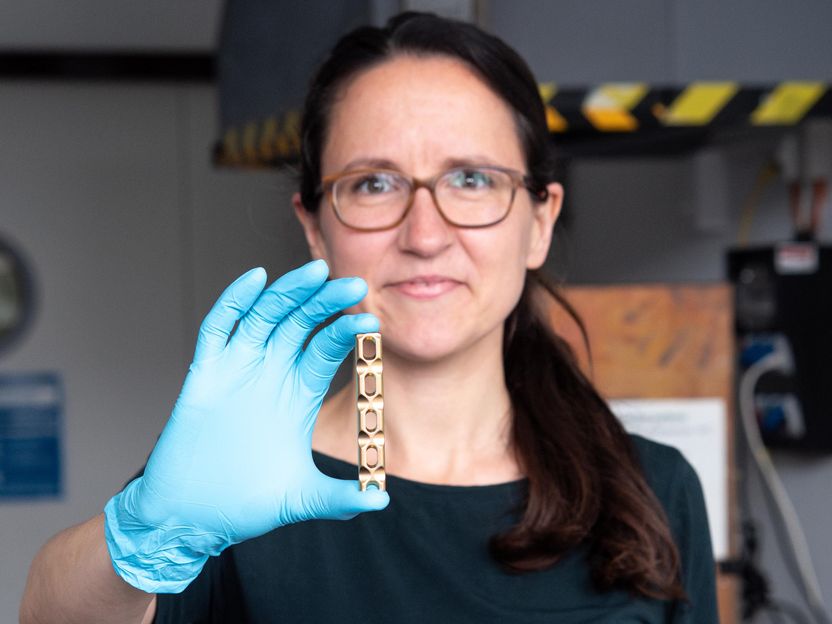Materials Science Meets Medicine: Unraveling Why Implants Fail

Medical implants are among the great success stories of modern healthcare. From artificial hips and knees to dental implants and pacemakers, they restore mobility, relieve pain, and extend quality of life for millions worldwide. Yet, despite decades of progress, implants sometimes fail—causing rejection, inflammation, or even breakage. Why does this happen, and why have such failures increased in recent years?
A new research initiative led by Martina Cihova, a scientist at Empa (Swiss Federal Laboratories for Materials Science and Technology), is exploring this mystery at the very frontier between materials science and medicine. Her project, supported by a prestigious Ambizione Grant from the Swiss National Science Foundation, focuses on understanding what happens when titanium—the most widely used implant material—meets the human body.
The Hidden Role of Titanium Oxide Layers
Titanium is valued in medicine for its strength, lightness, and biocompatibility. But what really makes it work inside the body is the thin oxide layer that forms naturally on its surface. This passive layer, often less than 10 nanometers thick, acts as a shield, allowing bone to bond to the implant while protecting it from corrosion.
The problem? This fragile layer can be altered by manufacturing methods. Processes like surface roughening to encourage bone growth, laser engraving for serial numbers, or even 3D printing custom implants can all change the oxide’s crystal structure. Different forms of titanium dioxide (TiO2)—whether crystalline or amorphous—have different electrochemical properties, which may affect how the body reacts. Too little research has been done to understand these subtle but critical changes.
The Body as a Corrosive Environment
When we think of corrosion, images of rusting bicycles or salty seawater come to mind. But the human body can be just as harsh. Immune cells release compounds that lower pH and attack foreign surfaces, especially when implants are introduced. Over time, this can compromise implant stability.
Dr. Cihova’s team is systematically studying these processes by exposing titanium samples with engineered oxide layers to increasingly complex environments: starting with simple saline solutions, then adding proteins such as fibrinogen, and ultimately testing interactions with living immune cells like macrophages. Using advanced electron microscopy, atomic force microscopy, and electrochemical analysis, they are mapping how structure, chemistry, and biology collide at the biointerface.
Towards Safer and Longer-Lasting Implants
The insights from this project may transform the future of implant design. By better understanding how surface treatments alter oxide behavior, manufacturers could engineer implants that resist biocorrosion more effectively, reducing failure rates and improving patient outcomes. Beyond orthopedics and dentistry, the findings could also inform nanomedicine and implantable biosensors, where stable biointerfaces are equally critical.
This interdisciplinary research highlights the growing convergence of materials science and medicine—two fields that, when combined, have the potential to profoundly reshape healthcare.
Read the full article here: Materials Science Meets Medicine: Why Implants Fail (ChemEurope).
This article for Quantum Server Networks was prepared with the help of AI technologies to enhance clarity, readability, and SEO optimization.
Sponsored by PWmat (Lonxun Quantum) – pioneers in GPU-accelerated materials simulation software for advanced research in quantum, energy, and semiconductor applications. Discover their solutions at: www.pwmat.com
📘 Explore more by downloading their company brochure.
🎁 Free Trial: Request your trial version today and get tailored insights for your R&D needs.
📞 Phone: +86 400-618-6006
📧 Email: support@pwmat.com
#Implants #Titanium #Biocorrosion #MaterialsScience #MedicalTechnology #Biomaterials #Nanomedicine #Prosthetics #Orthopedics #QuantumServerNetworks

Comments
Post a Comment